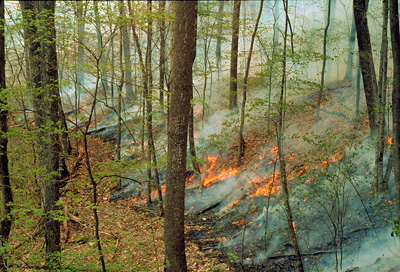Soil Science Society of America
5585 Guilford Road • Madison, WI 53711-5801 • 608-273-8080 • Fax 608-273-2021
www.soils.org
Twitter | Facebook
NEWS RELEASE
Contact: Hanna Jeske, Associate Director of Marketing and Brand Strategy, 608-268-3972, hjeske@sciencesocieties.org
How do forests recover from fire?
Mar. 16, 2017 – Forest fires can be frightening, destructive events. The Soil Science Society of America (SSSA) March 15 Soils Matter blog post explains the effects of forest fires on soil ecosystems—and how they bounce back.
 “The extent of damage is related to the temperature of the fire and the speed at which it moves through the forest,” says Mary Beth Adams, a soil scientist with the U.S. Forest Service.
“The extent of damage is related to the temperature of the fire and the speed at which it moves through the forest,” says Mary Beth Adams, a soil scientist with the U.S. Forest Service.
How quickly the forest recovers is also linked to these factors. Slow, controlled fires can bring benefits. “Burning can add charcoal to the soil, and may result in a short pulse of nutrients in the ash,” Adams explains. “Burning off the dead plant life, or weedy plants, increases sunlight to the forest floor. This often causes a flush of vegetation in response to the increase in light reaching the soil and available to plants. Extremely hot fires can sterilize the upper layer of the soils by killing the soil microbial life. They burn off large amounts of carbon stored in the soil, and change the ability of soil to absorb and retain water.”
Sometimes recovery is an easy part of the natural process, but some interventions can help prevent further damage.
To read the entire blog post, visit https://soilsmatter.wordpress.com/2017/03/15/how-do-forests-recover-from-fires/.
Follow SSSA on Facebook at https://www.facebook.com/SSSA.soils, Twitter at SSSA_Soils. SSSA has soils information on www.soils.org/discover-soils, for teachers at www.soils4teachers.org, and for students through 12th grade, www.soils4kids.org.